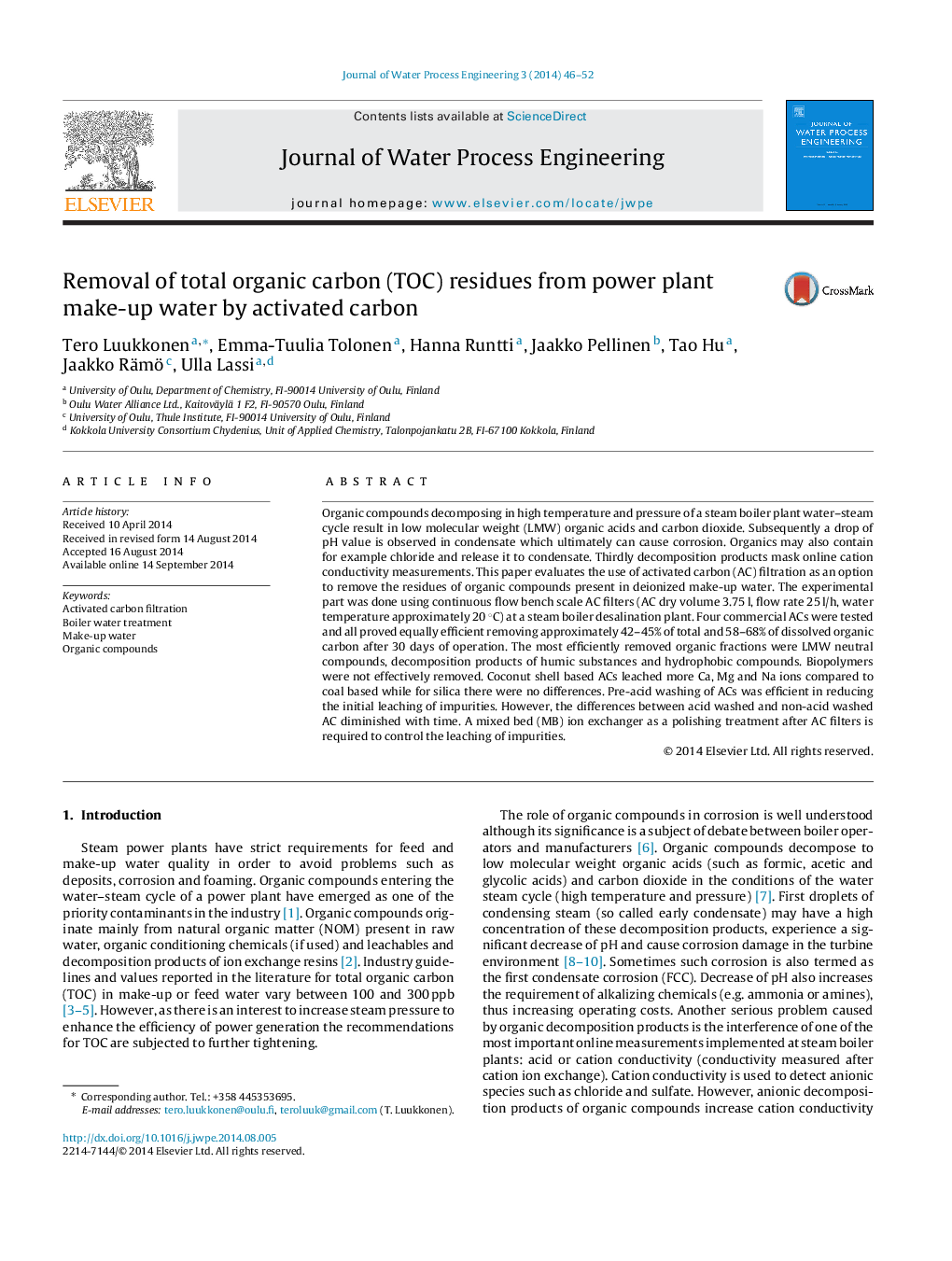| کد مقاله | کد نشریه | سال انتشار | مقاله انگلیسی | نسخه تمام متن |
|---|---|---|---|---|
| 232633 | 465295 | 2014 | 7 صفحه PDF | دانلود رایگان |

Organic compounds decomposing in high temperature and pressure of a steam boiler plant water–steam cycle result in low molecular weight (LMW) organic acids and carbon dioxide. Subsequently a drop of pH value is observed in condensate which ultimately can cause corrosion. Organics may also contain for example chloride and release it to condensate. Thirdly decomposition products mask online cation conductivity measurements. This paper evaluates the use of activated carbon (AC) filtration as an option to remove the residues of organic compounds present in deionized make-up water. The experimental part was done using continuous flow bench scale AC filters (AC dry volume 3.75 l, flow rate 25 l/h, water temperature approximately 20 °C) at a steam boiler desalination plant. Four commercial ACs were tested and all proved equally efficient removing approximately 42–45% of total and 58–68% of dissolved organic carbon after 30 days of operation. The most efficiently removed organic fractions were LMW neutral compounds, decomposition products of humic substances and hydrophobic compounds. Biopolymers were not effectively removed. Coconut shell based ACs leached more Ca, Mg and Na ions compared to coal based while for silica there were no differences. Pre-acid washing of ACs was efficient in reducing the initial leaching of impurities. However, the differences between acid washed and non-acid washed AC diminished with time. A mixed bed (MB) ion exchanger as a polishing treatment after AC filters is required to control the leaching of impurities.
Journal: Journal of Water Process Engineering - Volume 3, September 2014, Pages 46–52